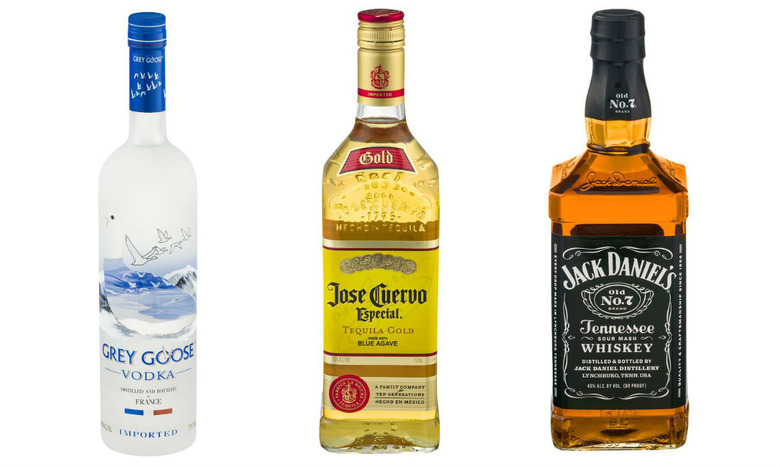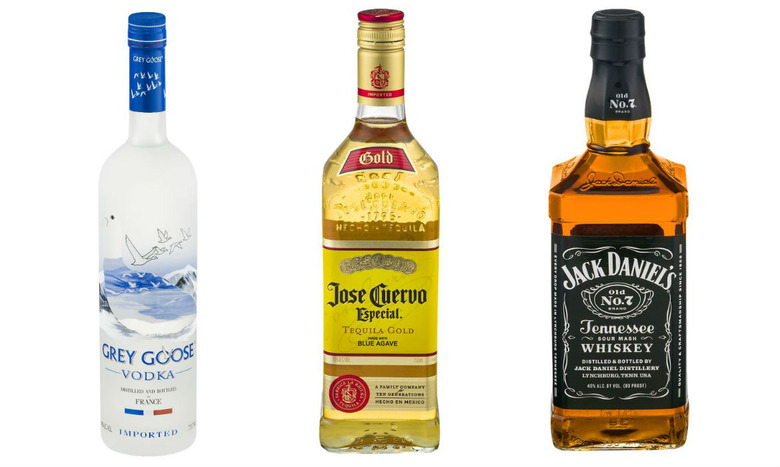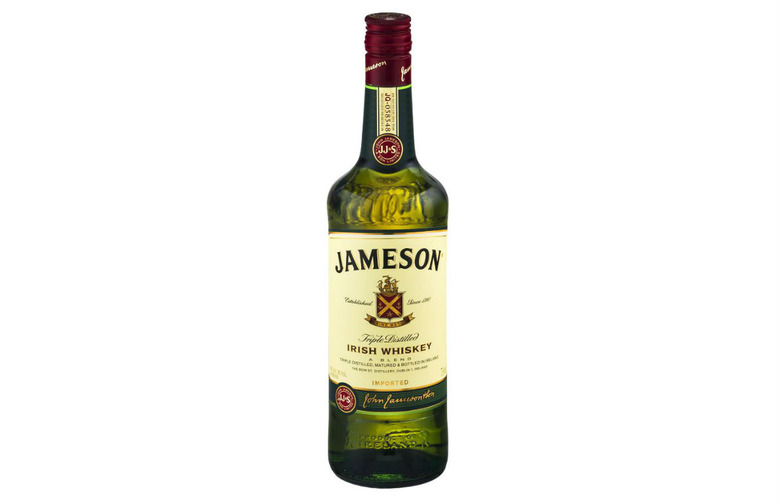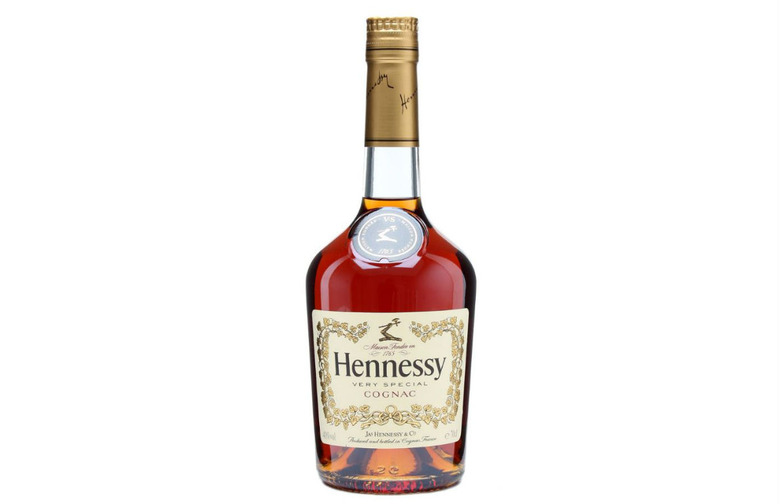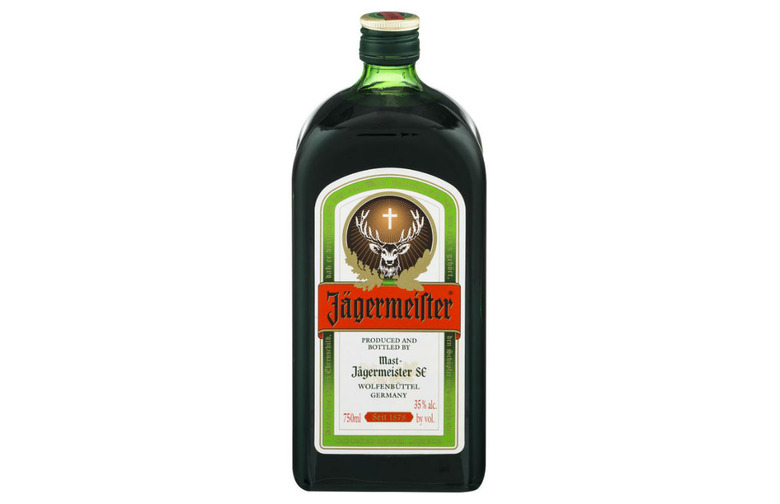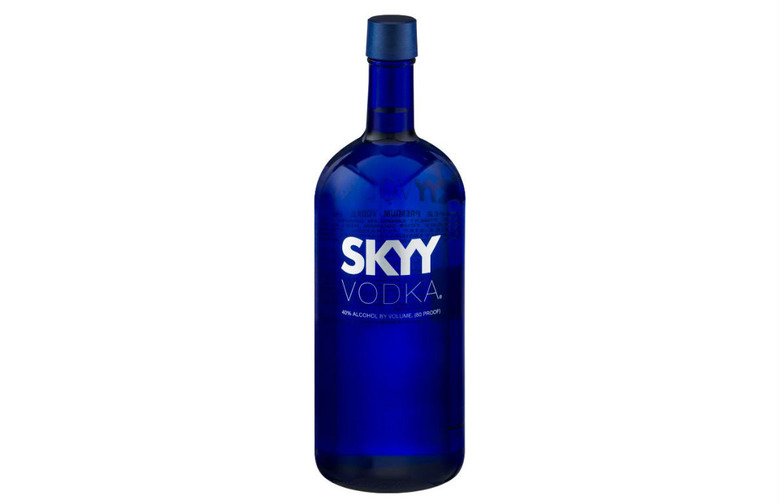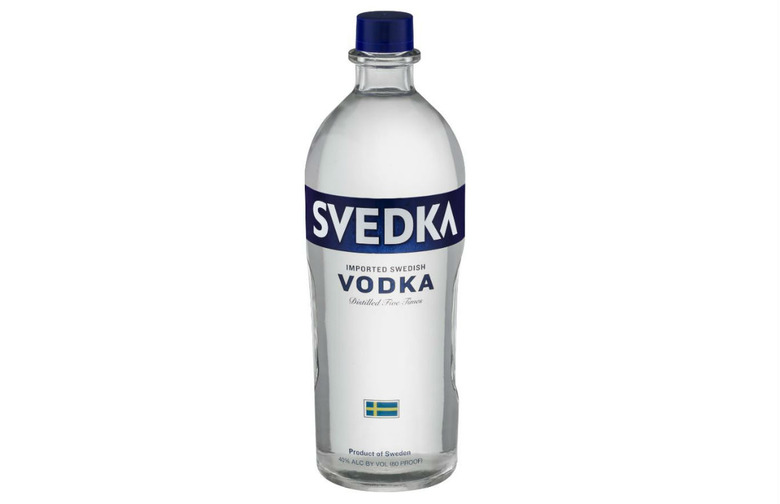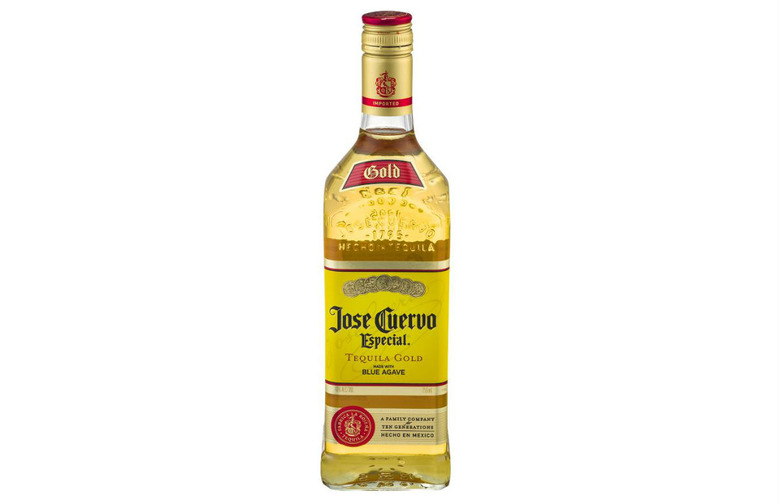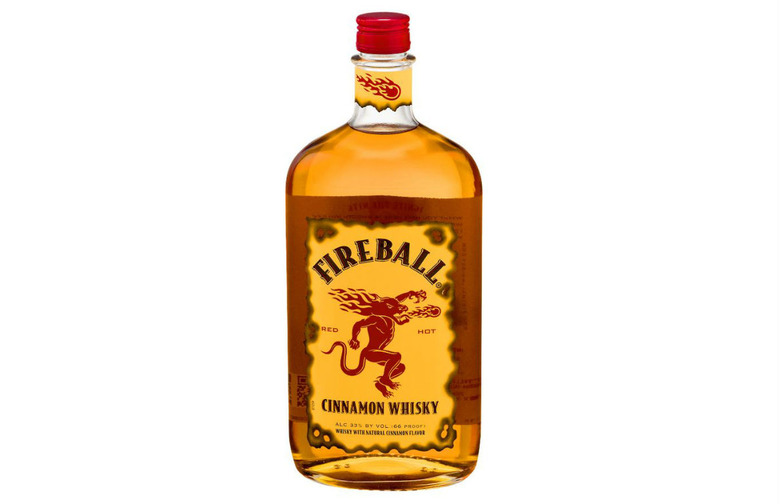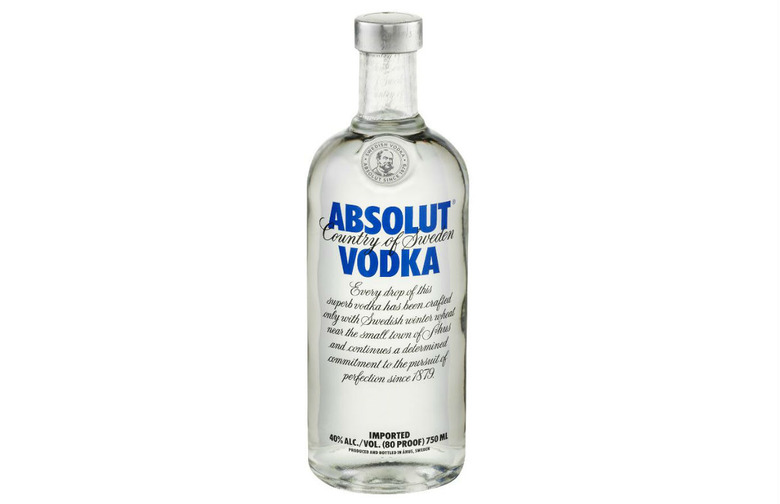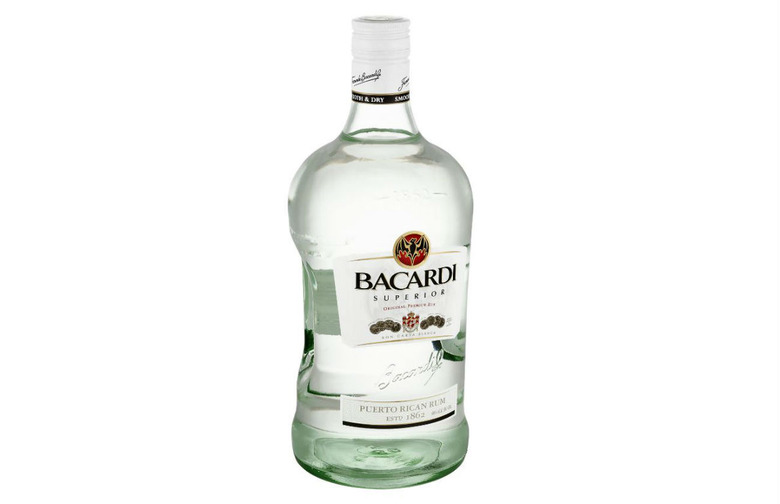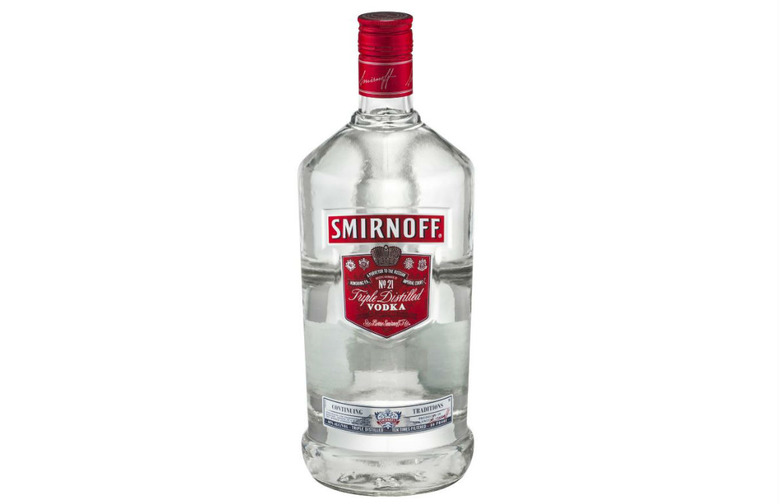Fascinating Facts About America's 15 Favorite Booze Brands
Fascinating Facts about America’s 15 Favorite Booze Brands
To most of us, liquor is somewhat of a mystery. The process that turns grains, yeast, and water into a warming dram of Scotch isn't actually too complicated, but it's still a lot to wrap your head around. But most fascinating of all are the stories behind the liquor brands themselves. We've consumed (plenty of) it, we have bottles of it in our liquor cabinets, and these are household names, but aside from the basics, we really don't know much about them.
#15 Jameson Irish Whiskey
The United States is the world's largest market for this easy-drinking Irish whiskey (demand far exceeds that in Ireland). The original Jameson distillery in Dublin is today a museum; the whiskey is now distilled at the New Middleton Distillery near Cork, alongside Powers, Redbreast, Paddy, and several other popular Irish whiskeys. Another fun fact: Founder John Jameson is the maternal great-grandfather of Guglielmo Marconi, the inventor of the wireless telegraph.
#14 Hennessy Cognac
Hennessy sells more than 40 percent of the world's cognac. It's part-owned by LVMH, one of the world's leading luxury brand conglomerates and the same parent company as both Louis Vuitton and Moët & Chandon. Kilian Hennessy, a fifth-generation direct descendant of founder Richard Hennessy (an Irishman who went to France to start the business), took over as CEO in the 1970s and stayed on the advisory board until 2010, when he passed away at the age of 103.
#13 Jägermeister
Jägermeister ("Hunting master") is a German digestif, made of 56 different herbs and spices, that was first introduced in 1935. It remained an obscure, after-dinner drink popular with blue-collar Germans (similar to Killepitsch and Kuemmerling) until the 1980s, when American importer Sidney Frank began heavily promoting it to the youth and student market; the rest is history.
The label is notable in a few regards: The glowing cross between the antlers is a reference to the two patron saints of hunters, Saint Hubertus and Saint Eustace; the product name on the label contains one of the only surviving examples of the defunct "long s" in print; and the German lettering around the perimeter is a poem by hunter Oskar von Riesenthal, which translates to
This is the hunter's badge of glory,
That he protect and tend his quarry,
Hunt with honor, as is due,
And through the beast to God is true.
Oh, and even though some frat bros might tell you otherwise, it doesn't contain any deer blood.
#12 Grey Goose Vodka
Sidney Frank, the same genius importer who made Jäger the powerhouse it is today, is also credited with creating Grey Goose in 1996. It's made in France with French spring water and soft winter wheat, and it single-handedly created the "superpremium" category in the American liquor market. Grey Goose isn't very popular in France; it was created exclusively for the American marketplace.
#11 Skyy Vodka
Skyy Vodka was invented by American entrepreneur Maurice Kanbar in 1992, and is made by adding water and flavorings to bulk ethanol distilled from wheat. Kanbar has quite the resume; he's invented more than 50 consumer and medical products ranging from a cryogenic cataract remover to an LED traffic light, and he also created New York's first multiplex cinema in 1972. He owns a large number of the commercial buildings in downtown Tulsa, and after donating $5 million to New York University, the institution named its film school after him.
#10 Svedka Vodka
This Swedish vodka is also distilled from wheat and is manufactured in Lidköping, Sweden, for its parent company, New York-based Constellation Brands (which also owns Robert Mondavi, Manischewitz, and Corona). Its name is an uninspired portmanteau of the words Svenska ("Swedish") and "vodka," and hardly anyone in Sweden actually drinks it.
#9 Jose Cuervo Tequila
Jose Cuervo sells one-fifth of the world's tequila by volume, making the world's best-selling tequila by far. It's still run by direct descendants of Don Jose Antonio de Cuervo, who founded the company in 1795. Don Jose's son was the first distiller to receive a permit to produce tequila commercially, and in 1880, Cuervo became the first distiller to bottle tequila (others were still using barrels). Whereas the highest-quality tequilas are distilled from 100 percent blue agave, top-selling Cuervo Especial is "mixto," made with 51 percent agave and 49 percent sugarcane spirit.
#8 Jim Beam Bourbon
Seven generations of the Beam family have been involved with production of their namesake whiskey, which was first distilled by Johannes "Reginald" Beam (formerly Böhm) in 1795, before bourbon was even recognized as its own style of whiskey. Beam called his distillery Old Tub, and his whiskey was dubbed Old Jake Beam Sour Mash. The company wasn't renamed Jim Beam until 1933, when it came back to life after Prohibition under the auspices of distiller James Beauregard Beam.
#7 Fireball Cinnamon Whisky
Fireball got its start in the mid-1980s as a flavored Canadian-whisky-based schnapps developed by Seagram. The formula was purchased by The Sazerac Company in 1989, and they began selling it as a part of their Dr. McGillicuddy's line of liqueurs. The product was rebranded as simply Fireball Cinnamon Whisky in 2007, which proved to be a very wise move: In 2013, sales exploded to an astonishing $130.6 million, compared to just $1.9 million two years prior. Fireball is currently the fastest-growing liquor brand in America.
#6 Absolut Vodka
The third-largest spirit brand in the world, Absolut was established in 1879 by Lars Olsson Smith, who used a brilliant (and slightly shady) tactic to achieve success: Liquor creation in Stockholm was controlled by the city, so he set up shop just outside of the city limits and sold it for less money than the city's product (he even offered free boat rides to his distillery). The brand was taken over by the Swedish government along with all other liquors in 1917, but the state sold it to Pernod Ricard for €5.63 billion in 2008. More than one kilogram of winter wheat is used to create each bottle.
#5 Crown Royal Whisky
When King George VI (Queen Elizabeth II's father) visited Canada in 1939, Samuel Bronfman (the president of Seagram and also a well-known philanthropist) rolled out this blended whisky in his honor (hence the name). It was sold exclusively in Canada until 1964, when it was introduced to American markets. Today it's owned by Diageo and is produced at a distillery on the shores of Lake Winnipeg in Manitoba.
#4 Bacardi Rum
Bacardi is the largest family-owned spirits company in the world. It was founded in Cuba in 1830 by a Spanish wine merchant named Facundo Bacardí Massó, who discovered a way to mellow rum, which was harsh and cheap at the time, by isolating a strain of yeast (still in use by the company) and removing impurities through charcoal filtration, creating the first white rum. Bacardi became massively popular in Cuba, Mexico, and Puerto Rico by the late 1930s, and expanded into the U.S. in 1944. Bacardi left Cuba for the less-hostile Puerto Rico during Castro's revolution, and no Bacardi can be found in Cuba today.
Fun fact: Bacardi's first distillery, bought in 1862, was home to lots of fruit bats in the rafters — this is why the company's logo is a bat.
#3 Jack Daniel’s Whiskey
Jack Daniel ran away from home as a young teenager shortly after his father died during the Civil War, and began learning how to distill moonshine after being taken in by a lay preacher. After inheriting some money from his father's estate, he launched his own distillery and his bottles stood out for their square shape, which symbolized fairness and integrity. Even though it became popular after winning a gold medal at the 1904 St. Louis World's Fair, Jack Daniel still faced an uphill battle: Legal distillation was halted by a statewide Prohibition law in 1910, and production didn't restart until the law was repealed in 1938. Ironically, the top-selling American whiskey in the world is distilled in a dry county, so if you make a pilgrimage to Lynchburg, Tennessee, don't expect to be able to buy a bottle at the source.
#2 Captain Morgan Rum
The Captain Morgan story is a fascinating one, and you can find all the details here. In short, by the time the 1980s rolled around, Seagram's spirits sales were down and they were looking to put a dent in the rum market dominated by Bacardi. So they developed a vanilla-flavored rum that could be easily mixed with coke, and dubbed it "spiced rum." After a lengthy search for a new name, it was discovered that Seagram owned an "orphan brand" in the UK named Captain Morgan. A marketing strategy was developed, the new product was rolled out nationally in 1984, and the rest is history.
As for the namesake? That would be Sir Henry Morgan, a seventeenth-century Welsh privateer who made a fortune by raiding Spanish settlements in the Caribbean Sea and around the Gulf of Mexico.
#1 Smirnoff Vodka
Founded in Moscow by Pyotr Arsenievich Smirnov in 1864, Smirnoff grew to become the best-selling vodka in Russia by 1886 thanks to a couple early innovations: It was the first vodka to utilize charcoal filtration, the first to advertise in newspapers, and the first to make "charitable contributions" to Russian clergy in order to put the kibosh on anti-vodka sermons. But because of the Russian Revolution of 1917, the Smirnov family had to flee the country, and by the 1930s the company was all but defunct. American company Heublein came to the rescue in 1939, when it purchased Smirnoff with $14,000 it had earned selling its new brand of steak sauce, A-1.
Sales were slow in the U.S. until Heublein's marketing department got the idea to sell the vodka (which was relatively unknown at the time) as "white whiskey," and over the years it grew, and grew, and grew in popularity.
